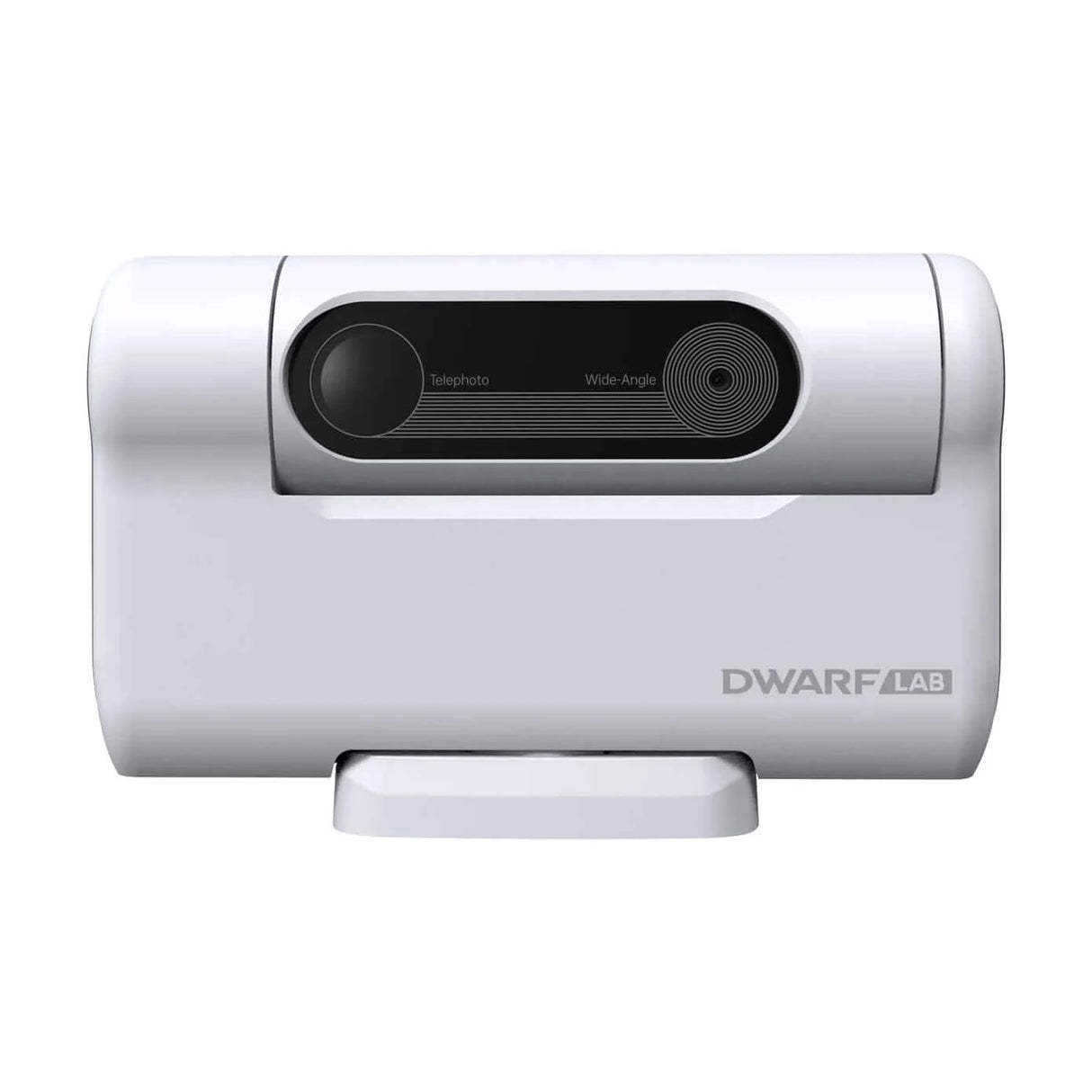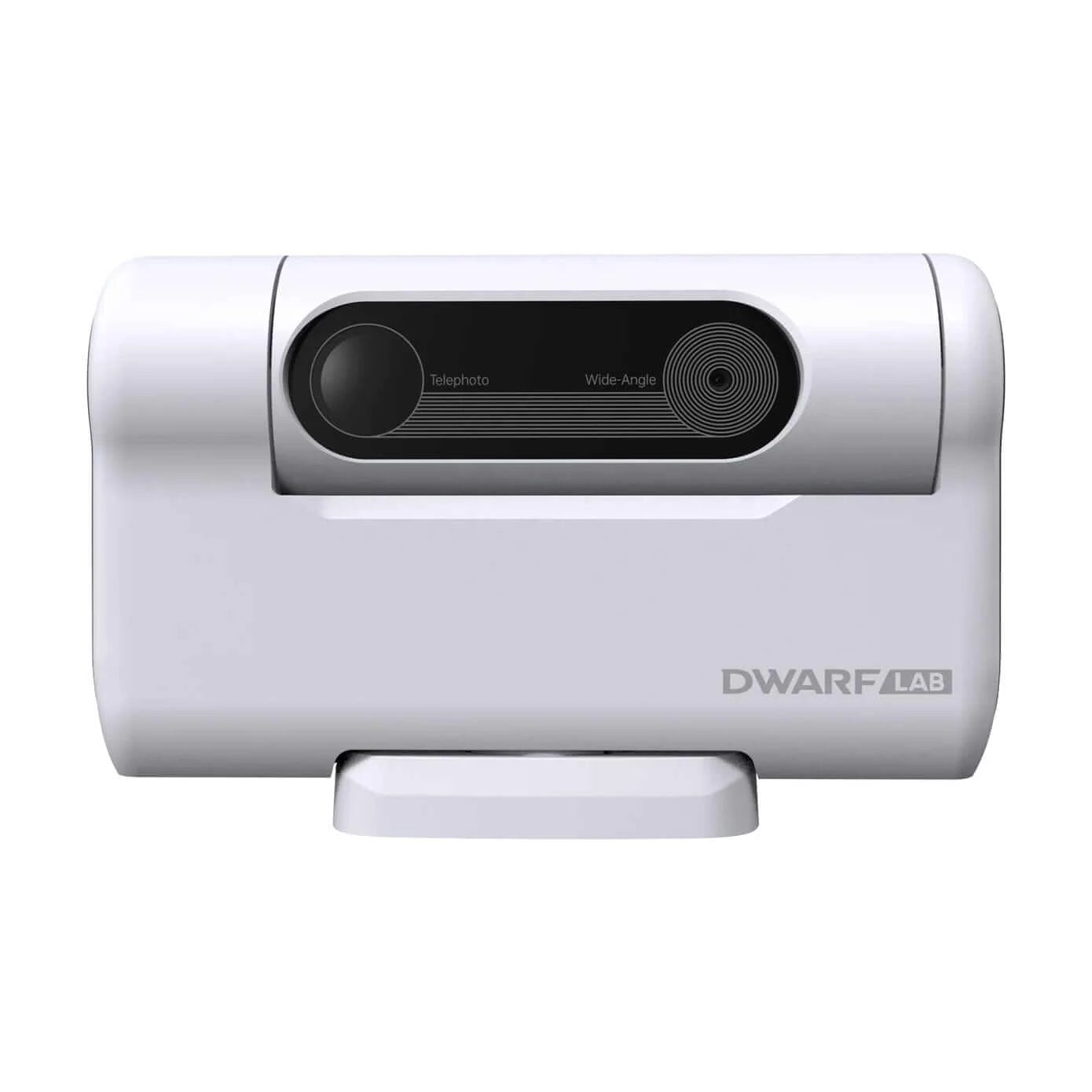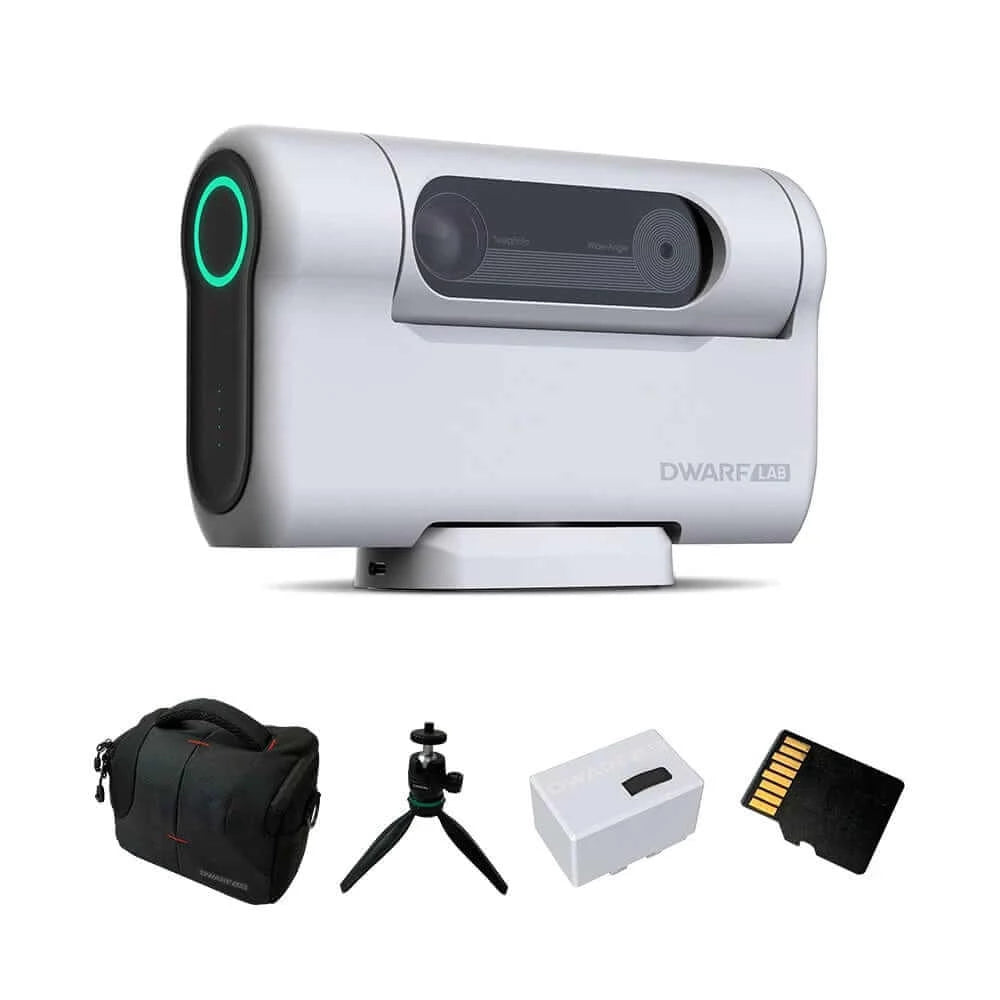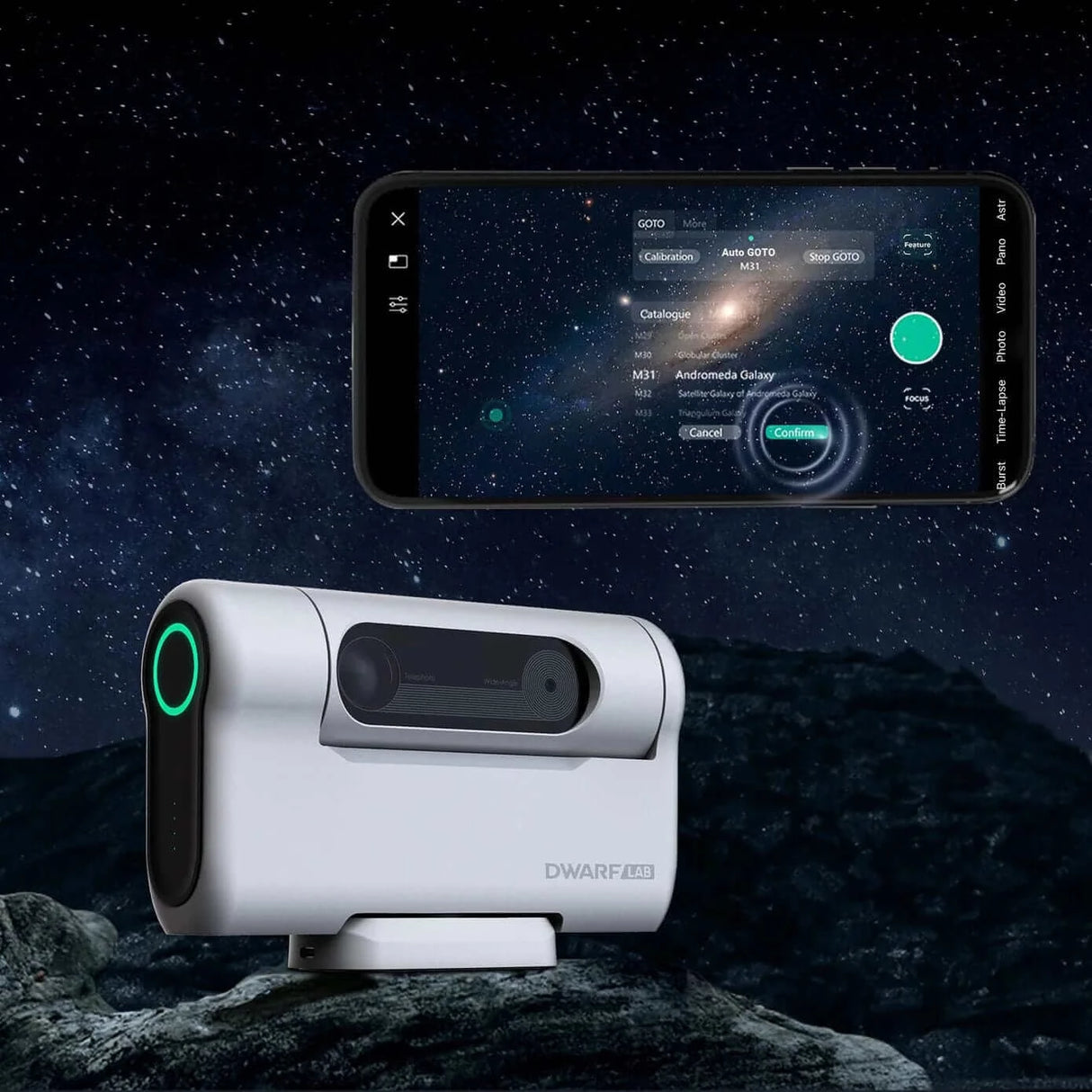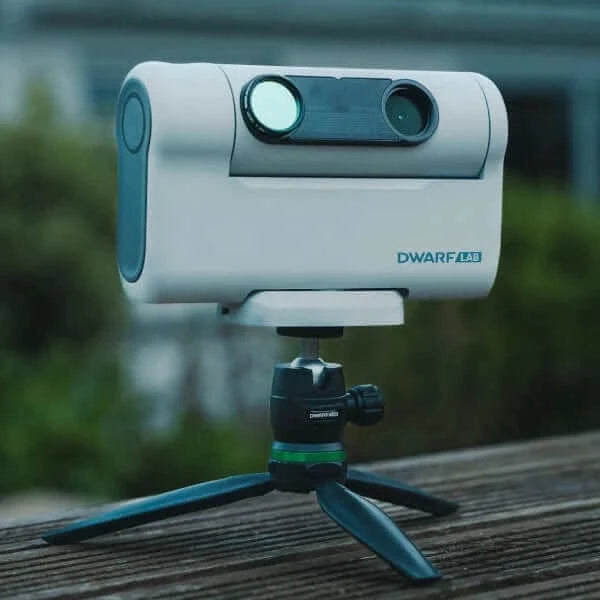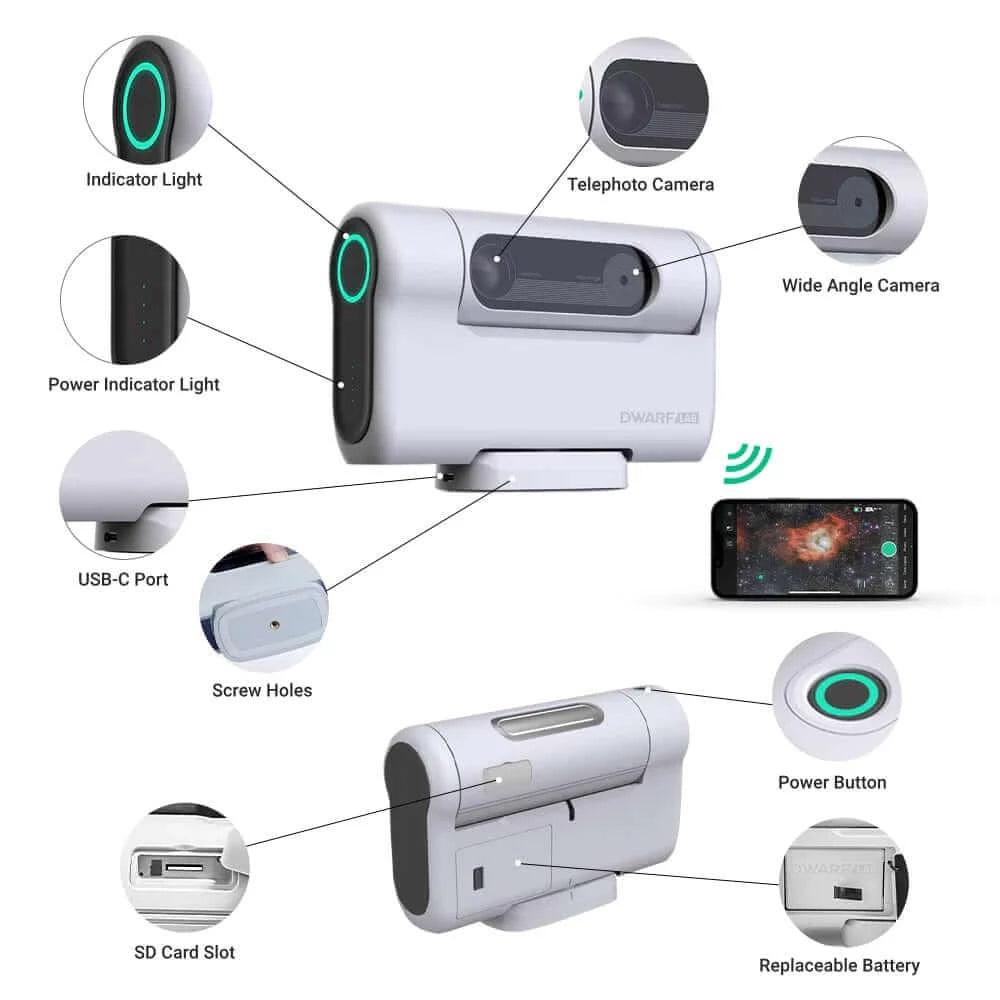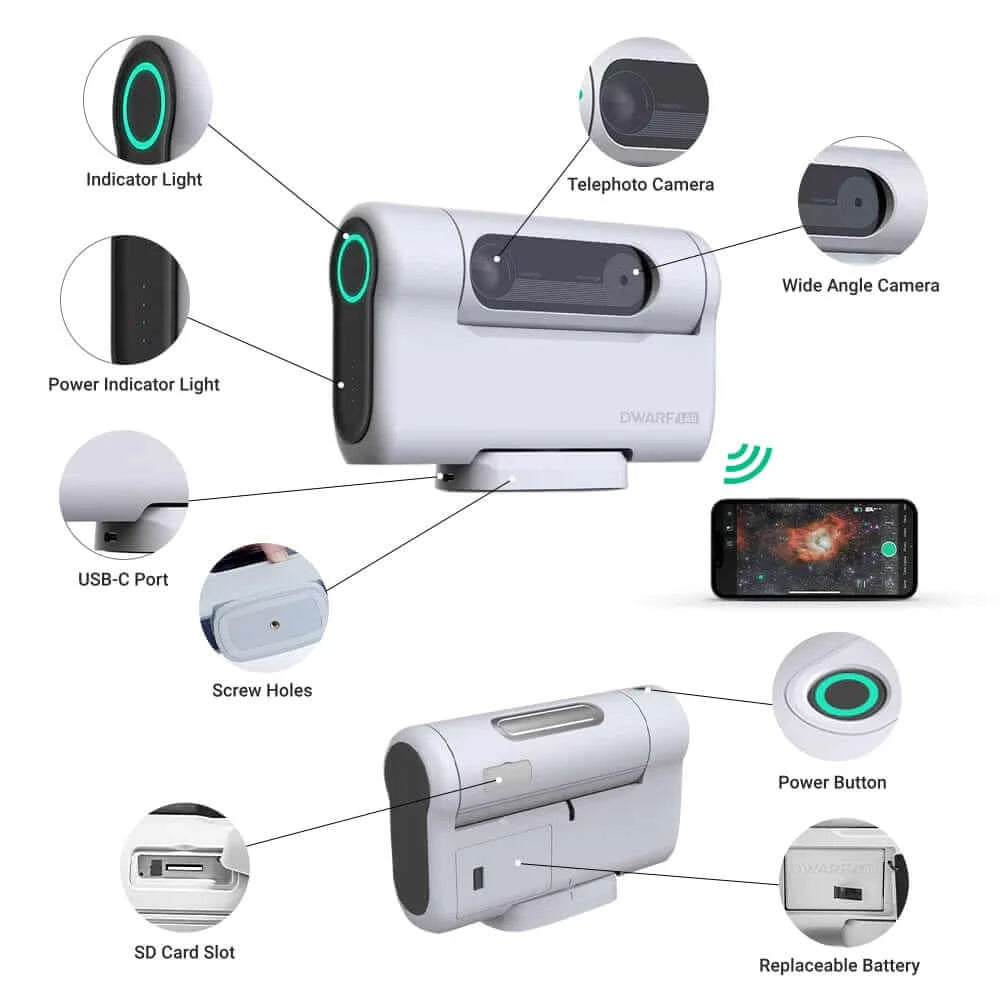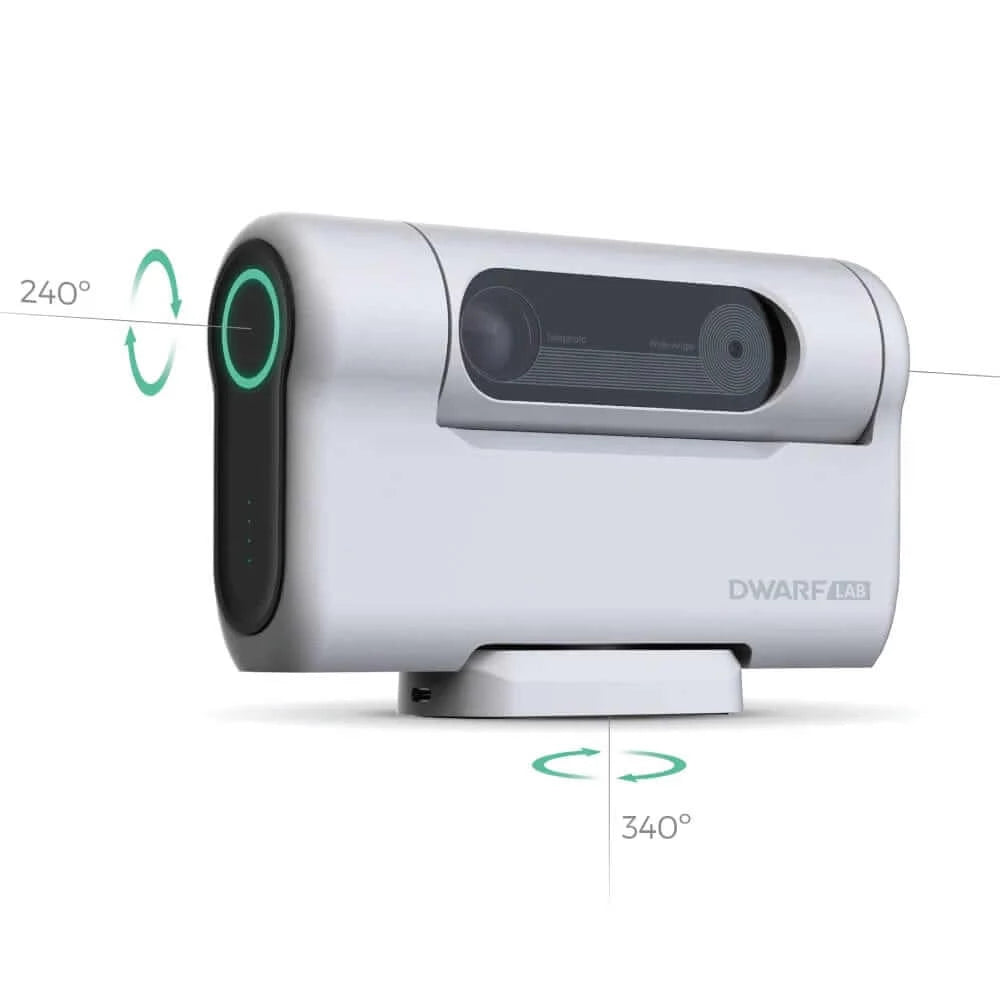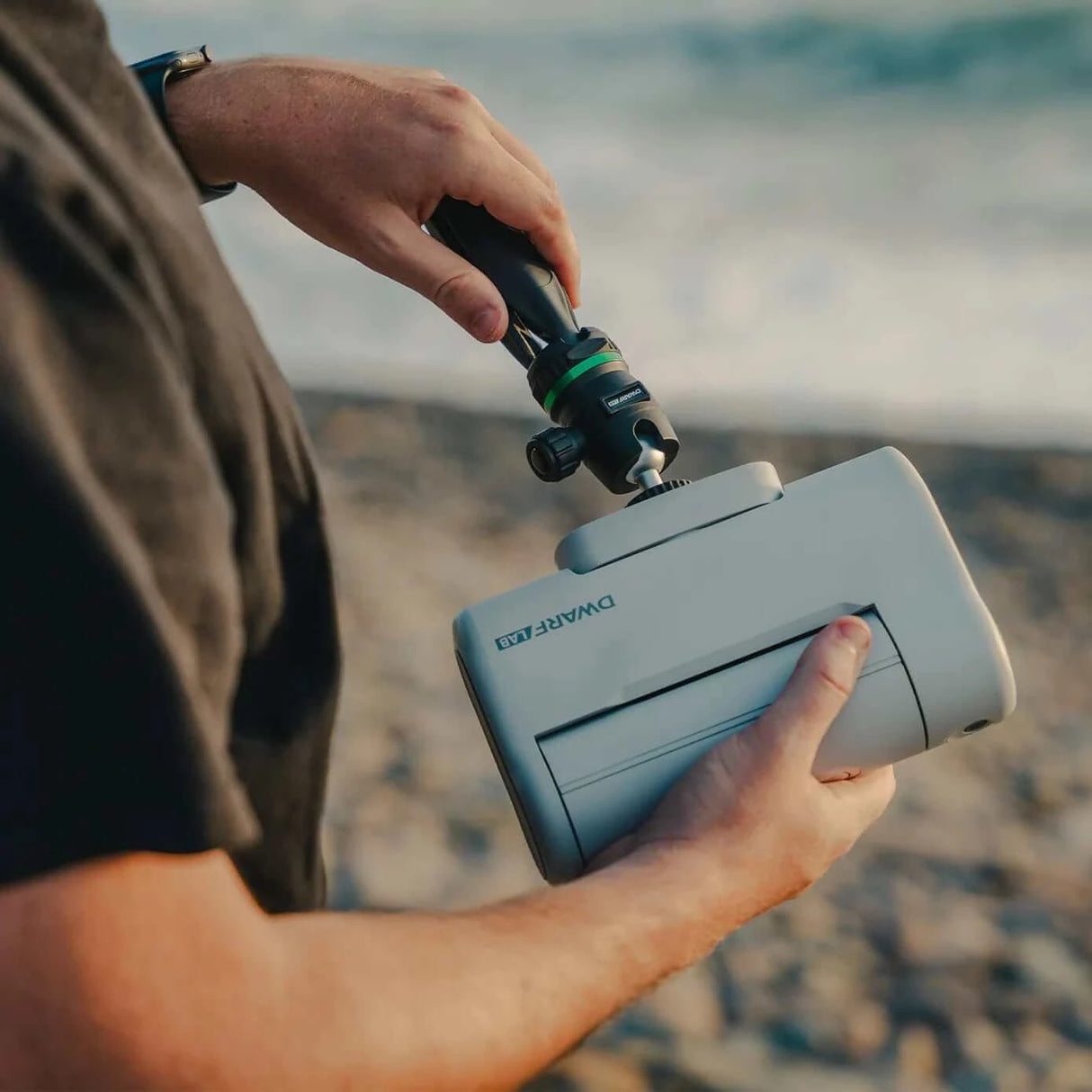
DWARF II Solar Elite
DWARF II Solar Elite is backordered and will ship as soon as it is back in stock.
Out of stock
Sign up to be the first to know when this product becomes available
Shipping & Returns
Shipping & Returns
We offer free US standard shipping on orders over $99 and 30-day returns on most items. Some limitations apply.
Shipping Policy
30-Day Return Policy
DWARF II Solar Elite - Smart Telescope with Solar Filters
Features
- Smartphone Control
- Solar Filters
- Compact & Ultra-Portable
- AI-Powered Object Tracking
- One-Click GOTO
- Auto Star Tracking & Stacking
- Gigapixel Panorama
- Replaceable Battery & Type-C Charging
- Included 64GB Micro Memory Card
Introducing DWARF II - the world's most portable smart telescope controlled by the mobile app DWARFLAB.
Are you an amateur astronomer, bird watcher, or wildlife photographer? Well, DWARF II is exactly what you need.

Versatile to Take Shots of Stars, Birds and Animals
DWARF II is a digital smart telescope with dual cameras and AI power. You can take shots of the Sun, Moon, deep sky objects, Galaxy and Nebula. Watch and record videos of birds and animals. It works both in daytime and night time.

Hassle-Free Setup and Control with Your Mobile App
Connect your smartphone/tablet with DWARF II via WiFi, then you can wirelessly control the telescope through DWARFLAB App (available in Android & iOS) and take pictures/videos.
Note: Please ensure that your phone/tablet supports Bluetooth 4.0 & WiFi 5GHz

Dual Camera System for Unparalleled Viewing
DWARF II has two cameras, a wide-angle camera, and a telephoto camera. You can find the telephoto framing box in the wide-angle lens picture, which enables you to accurately and quickly locate the target and start shooting.

Auto Star Tracking & Stacking for Astrophotography
Due to Earth’s rotation, the stars move slowly in the sky. DWARF II can automatically track the stars. It can rotate around the altitude and azimuth along the movement of stars. DWARF II uses a field-rotation-correction algorithm to avoid the field rotation. Then you can use DWARF II to track deep-sky objects with long exposure time. Automatic registration after multiple exposures, DWARF II stacks the images into a bright and clear image.
![]()
AI Powered Object Recognition and Tracking
Whether it's a bird or a ball player, DWARF II's neural network processing unit (NPU) automatically recognizes and tracks the movement of your chosen subject. If the action slows down, you're one click away from zooming-in for a closer look. Our panoramic and telephoto lenses are always kept in sync and our app enables one-click switching between them.

Ultra-Portable, Travel-Friendly
Weighing in at 1.2 kg (2.6 lbs) you can take DWARF II anywhere (even in a plane) in its custom-padded bag or in a backpack. It is a great companion for backyard stargazing, camping and RV living.

What's in the Box
- DWARF II Telescope x 1
- Tripod x 1
- Carry Bag x 1
- Rechargeable Battery x 1
- 64GB Micro Memory Card x 1
- Filter Adapter x 1
- ND Solar Filter x 2
- Type-C USB Cable x 1
Upgrade to the Dwarf II Deluxe which features everything this package offers plus includes the UHC filter and a second rechargeable battery.
-
Item Number
-
Aperture
-
Focal Length
-
Field of View
-
Optics
-
Dimensions
-
Weight
-
Other Details
-
Warranty
Payment & Security
Payment methods
Your payment information is processed securely encrypted during transmission. We do not store credit card details nor have access to your credit card information.
Questions & Answers
Have a Question?
-
What is the max magnification?
The Dwarf II does not follow the traditional magnification metrics used for conventional telescopes. Instead, it utilizes a camera system to capture and enhance images. The primary features of the Dwarf II include its ability to perform long-exposure photography and stack images to produce clearer and more detailed views.
In practical terms, the Dwarf II has a fixed optical system with a focal length of 100mm and an aperture of 24mm. This setup provides a relatively wide field of view rather than high magnification. The actual magnification is determined by the camera sensor and the digital processing applied to the images.
While it does not have a maximum magnification per se, the Dwarf II excels in capturing wide-field views and detailed images of objects like the moon, planets, and deep-sky objects through image stacking and processing techniques. For those interested in high-magnification views of specific objects, traditional telescopes with interchangeable eyepieces might be more suitable.



